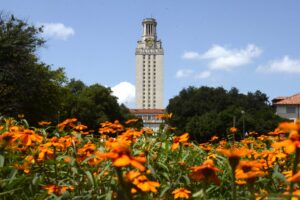The Lady Bird Johnson Wildflower Center at The University of Texas at Austin, the American Society of Landscape Architects (ASLA) and the United States Botanic Garden (USBG) will release a report today recommending guidelines and a rating system for sustainable landscape design.
The report features more than 200 recommendations for designing and building sustainable landscapes.
The Preliminary Report on Standards and Guidelines represents thousands of hours of work by 32 experts in fields ranging from design and construction to soils, hydrology and public health.
“We want to identify the gold standards in sustainable landscape design and marry them to a practical, real-world approach so that designers, planners, builders and developers can utilize them,” said Nancy Somerville, executive vice president and chief executive officer of ASLA. “This report is an important step to bring sustainable landscape practices into widespread use.”
The report examines practices that degrade landscapes and should be avoided, as well as techniques for designing landscapes that benefit the environment.
The findings detail the positive environmental impact sustainable landscapes offer, including planting appropriate vegetation to help control erosion, filter out pollutants, provide habitat for wildlife and pollinators, and supply oxygen for the air we breathe.
“The truly exciting thing about sustainable landscapes is that they actually help us confront some of the most serious environmental problems the world is facing now, including climate change,” said Susan Rieff, executive director of the Wildflower Center. “Plants absorb carbon dioxidea greenhouse gas and a major cause of global warming from the air and soils can capture it and hold it. Native grasses may be even more effective in sequestering carbon than trees. This can help mitigate climate change.”
“People want to do the right thing, but they need guidelines,” said Holly Shimizu, executive director of the United States Botanic Garden. “The standards developed under Sustainable Sites will integrate landscape into the overall green movement. Without the landscape component, a truly sustainable lifestyle isn’t possible.”
The preliminary report is the first of three for the Sustainable Sites Initiative, a program designed to develop guidelines and standards for landscape sustainability. A primary purpose of releasing this preliminary work is to solicit feedback, comments and additional information from professionals and other stakeholders who can contribute to knowledge about ways to achieve sustainable landscapes. Interested persons can join this review process online. Comments are due by Jan. 11, 2008.
After feedback is gathered from the review process, a comprehensive report will be published in October 2008 with the release of final Standards and Guidelines for Sustainable Sites planned for May 2009. The Sustainable Sites Initiative plans to produce a rating system by May 2011 and test the guidelines with pilot projects in 2010 and 2011.
Eventually, a rating system will be established that will apply to large and small sites, and can be used independently or incorporated into other green rating systems. The U.S. Green Building Council is lending its support to this project and plans to adopt the Sustainable Sites metrics into future versions of LEED® (Leadership in Energy and Environmental Design) Green Building Rating System.
Additional program partners include the U.S. Green Building Council, the Environmental Protection Agency’s GreenScapes Program, the National Recreation and Parks Association, the American Society of Civil Engineers’ Environment and Water Resources Institute, the National Association of County and City Health Officials, the Nature Conservancy’s Global Invasive Species Initiative and the Center for Sustainable Development at The University of Texas at Austin.
For more information contact: Saralee Tiede, director of communications, Lady Bird Johnson Wildflower Center, 512-232-0104.



